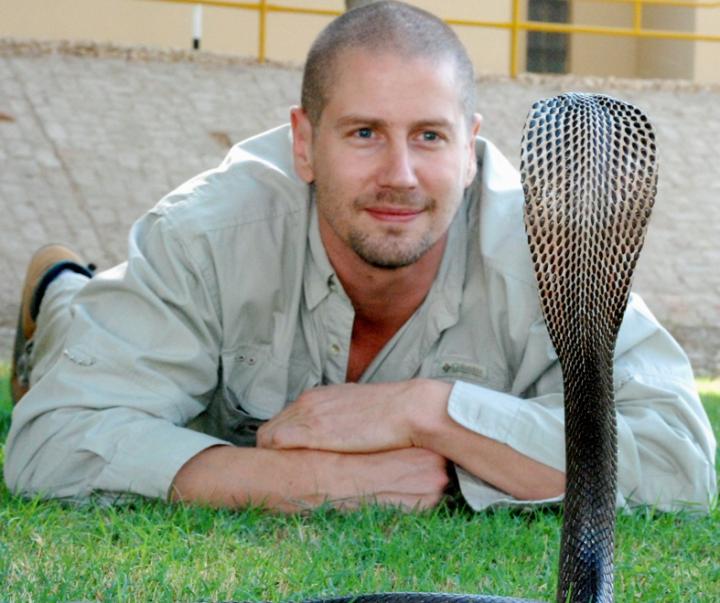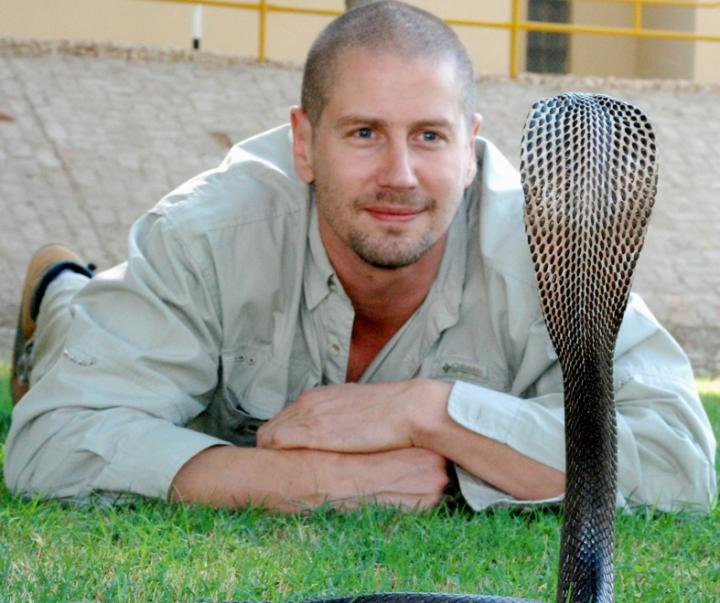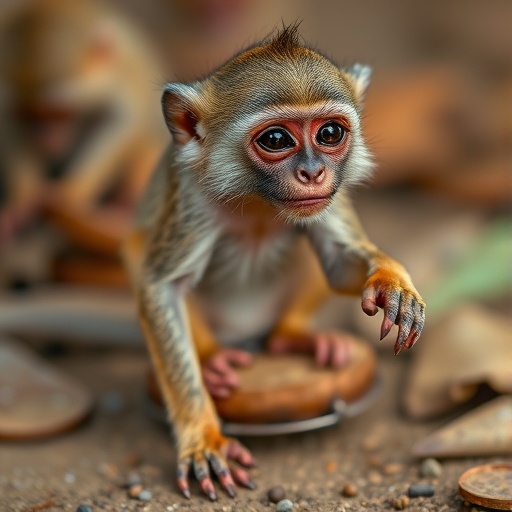
Credit: Courtesy Associate Professor Fry.
A University of Queensland-led international study has revealed how one of the world's most feared types of snakes — cobras — developed their potent venom.
Associate Professor Bryan Fry of UQ's School of Biological Sciences said cobras were killers in Africa and Asia, and caused crippling social and economic burdens through the number of survivors who needed amputations due to the snake's flesh-eating venom.
"While we knew the results of their venom, how the cobra's unique defensive venom evolved remained a mystery until now," he said.
"Our study discovered the evolutionary factors shaping not only cobra venom, but also the ornate markings on their hoods, and the extremely bright warning colourings present in some species."
The research team studied 29 cobra species and related snakes, finding that the flesh-destroying venom first evolved alongside the broad hoods that make cobras so distinctive.
Dr Fry said further increases in the potency of the toxins subsequently occurred parallel to their warning strategies such as hood markings, body banding, red colouring and spitting.
"Their spectacular hoods and eye-catching patterns evolved to warn off potential predators because unlike other snakes, which use their venom purely for predation, cobras also use it in defence," he said.
"For the longest time it was thought that only spitting cobras had these defensive toxins in high amounts in their venoms, however we've shown that they are widespread in cobras.
"These results show the fundamental importance of studying basic evolution and how it relates to human health."
Dr Fry said the next step in the team's research was to conduct broad antivenom testing.
"Globally, snakebite is the most neglected of all tropical diseases and antivenom manufacturers are leaving the market in favour of products that are cheaper to produce and have a bigger market," he said.
"Antivenom is expensive to make, has a short shelf life and a small market located in developing countries.
"Therefore, we need to do further research to see how well those remaining antivenoms neutralise not only the toxins that kill a person, but also those that would cause a severe injury."
He said there may also be a benefit to this research in cancer treatment.
"Any kind of compound that selectively kills cells could be a good thing," Dr Fry said.
"These chemicals may lead to new cancer treatments if we can find ones that are more potent to cancer cells than normal healthy cells.
"Cobras are a rich resource of novel compounds in this way so there may ultimately be a silver lining to this very dark cloud."
###
The study, published today in the journal, Toxins, involved scientists from UQ's Venom Evolution Lab; QIMR Berghofer Institute of Medical Research; UQ School of Medicine; Swansea University, UK; Monash University; working groups for Adder Research and Venomous Bites in the Netherlands; Leiden University, Netherlands; Snakebite Assist, Pretoria, South Africa; Pretoria University; Venom Supplies, South Australia; and Planet Exotica, France.
Media Contact
Associate Professor Bryan Fry
[email protected]
61-400-193-182
@uq_news
http://www.uq.edu.au
############
Story Source: Materials provided by Scienmag





